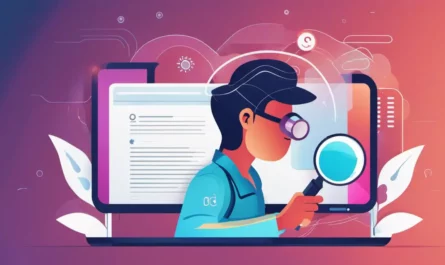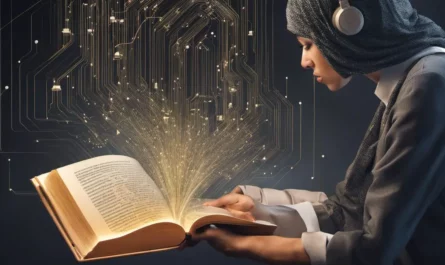There is no denying that artificial intelligence is leaving its mark on every aspect of life, and education is no exception. As we constantly strive to enhance educational experiences and methodologies, AI platforms like Generative Pretrained Transformer 3 (GPT-3), or more commonly referred to as ChatGPT, have emerged as potent tools capable of revolutionizing the way we approach learning and teaching. Key to understanding the impact of ChatGPT in education is a clear comprehension of what the technology is, how it functions, and the potential roles and benefits it can bring in reshaping education. At the same time, it’s equally important to be aware of any concerns and limitations that might accompany its adoption.
Understanding ChatGPT
ChatGPT: An In-Depth Look Into The World of Advanced AI Language Models
For anyone passionate about exploring the fascinating terrain of artificial intelligence, the name “ChatGPT” is sure to raise sparks of recognition. A revolutionary feat in machine learning techniques, ChatGPT has transformed the dynamic between humans and technology—making it a hot discussion topic in both industry-related circles and hobbyist communities.
ChatGPT is a language model developed by OpenAI. From a technical perspective, it belongs to the Generalized Pre-training Transformer (GPT) family of models. The ‘Chat‘ prefix denotes the focus on developing sophisticated, human-like chatbot capabilities. However, ChatGPT’s magic lies not just in ‘what‘ it is but also in ‘how‘ it functions, and that indeed is an intriguing quest for understanding.
A cardinal trait of ChatGPT is its skill as an innovative conversational AI. It can generate human-like text by predicting the next probable words in a sentence, courtesy of the ‘transformer‘ framework, a deep learning model architecture. This impressive feat doesn’t come from nowhere – it’s the output of a robust ML model training system known as ‘unsupervised learning‘. In simple terms, the model is fed a colossal amount of internet text, and through pattern recognition and repetition, it learns grammar, facts, reasoning abilities, and even biases present in the dataset.
Although the technical term is ‘unsupervised‘, the learning process warrants a good deal of human intervention. Currently, ChatGPT is shaped through a two-step process: a pre-training phase and a fine-tuning phase. During pre-training, the model learns to predict the next word in a sentence, while the fine-tuning phase helps it heed safety and usability standards, guided by a team of human reviewers following OpenAI’s guidelines.
An intricate reality of ChatGPT lies in its limitations. It doesn’t have beliefs or consciousness, and it doesn’t understand the text. It’s more like a parrot, mimicking human-like text based on its training data. It isn’t infallible either, as it can sometimes make outrageous claims, deviate from the context, or produce biased responses. OpenAI has a system of feedback and iterative process to constantly improve these aspects of the model.
On the upside, ChatGPT’s potential is vast. Tech enthusiasts and AI hobbyists are sure to be thrilled by its real-world applications. It’s observable in Q&A systems, drafting emails, creating original content, English language tutoring, and even playing role-playing games! If you’ve ever used OpenAI’s ‘GPT-3 Creative Writing’, you’ve already had a firsthand experience of these marvels.
As AI continues its march forward, the study and understanding of models like ChatGPT are going to be even more critical. For hobbyists and practitioners alike, ChatGPT represents a benchmark in the continuum of AI innovation. Each discovery, each advanced model, is another step toward a future where machines serve as helpful complements to human lives, encouraging a synergetic relationship between humanity and technology. As daunting as this frontier may seem, it’s also pretty darn exciting, isn’t it?

Role of ChatGPT in Education
The Protagonist: ChatGPT – Ascent in the Education Sector
As we tread forward in the artificial intelligence domain, it’s crucial to explore the potential of ground-breaking models such as ChatGPT in diverse arenas, one of which would be education. This autonomous language model’s capacity to foster learning goes beyond basic functionalities like content creation and English language tutoring and delves into personalized instruction, efficient modeling of concepts, and even invigorating research methodologies.
Personalized Learning: ChatGPT can offer bespoke learning experiences by gauging a student’s understanding and then tailoring responses to ensure the subject matter aligns with the learner’s level of comprehension. This customized learning path, coupled with the model’s ability to engage in human-like text generation, opens up prospects for one-on-one conversational education, eliminating the cookie-cutter approach to learning.
Active Learning Methodologies: ChatGPT could significantly enhance the learning process by simulating real-time, interactive experiences. Imagine a history session, where the model transforms into an interactive participant, simulating a conversational environment that depicts important historical events as if it’s happening then and there. This could equip learners with a vivid understanding of the subject, refining their interpretation skills.
Educational Research: ChatGPT can be a valuable tool for academic researchers. The model’s ability to analyze massive amounts of data, create summaries of complex texts in a comprehensive manner, or even generate insightful hypotheses can facilitate a more efficient research process.
Bridge Learning Gaps: ChatGPT could function as a ’24/7 available tutor.’ The model’s capacity to respond instantaneously to queries and provide clarifications can be a boon, especially for students studying remotely or in different time zones, thus bridging the gap in accessibility to round-the-clock educational support.
Standardized Test Prep: With its proficiency in content generation, students can leverage ChatGPT for optimum preparation for standardized tests. The model can generate practice questions, provide descriptive solutions, and even simulate timed tests, creating a controlled environment for students to improve their scores.
The Final Act: Challenges Ahead
However, utilizing ChatGPT, or any AI-model, in the educational realm doesn’t come without its set of challenges. Ensuring responsible and ethical use, upholding academic integrity, data privacy concerns, and fine-tuning the model’s content to avoid potentially harmful misinformation stand out as formidable hurdles that need addressing. Moreover, the model’s interpretability, including how and why it generates certain outputs, is yet another area that needs further exploration.
While it appears that a journey with ChatGPT through the expansive realm of education is filled with exciting prospects, it definitely calls for continued research, scrutiny, and careful implementation. Let’s be keen observers and enthusiastic participants in this novel saga where AI not only learns about us, but also aids in learning and teaching, as it continues to evolve for better!

Benefits of ChatGPT in Education
Diving right in, let’s unravel the immense potential of implementing ChatGPT, this extraordinary AI adaptation, into our classrooms.
When it comes to personalized learning, ChatGPT can be a game-changer! Imagine an AI-aided system adept at tailoring educational content to a student’s specific learning style, pace, and interests. With this, educators may design curricula catering to classroom heterogeneity, enhancing the learning experiences for students considerably, and capitalizing on the unique potentials of each learner.
Now, let’s shift the lens to active learning methodologies, which require students’ engagement and participation. ChatGPT, with its capability of generating human-like text, can prompt students to think critically, ask relevant questions, and stimulate intellectual discussions. This participative setting enabled by ChatGPT certainly fosters student-centric teaching methods.
Let’s weave in the aspect of educational research. Researchers, educators, and even students themselves can make vast use of ChatGPT to extract information and analyze data efficiently. The fact that this model can sift through enormous data, draw insights, and present information in an understandable format could revolutionize the traditional landscape of educational research.
Underpinning every effective teaching approach is the capacity to bridge learning gaps. And ChatGPT does this splendidly! By providing instant feedback and clarification to students’ queries, it can elucidate complex concepts and ensure comprehension. Additionally, ChatGPT can help teachers understand the individual learning processes of their students and adapt their instructional strategies accordingly.
What about standardized test prep? Fret not, ChatGPT has got this covered too! Not only can it provide a study-friendly structure but it can also challenge students with complex question sets, simulate a real exam environment, and even help in self-paced studying. The use of AI, in this case, enhances students’ learning efficiency and boosts their confidence in tackling standardized tests.
However, let’s not overlook the challenges that lie ahead. As promising as ChatGPT sounds, there are issues of cybersecurity, privacy, and reliability that need careful attention. Dependence on AI could potentially lead to decreased human interaction, which is crucial in a learning environment. Nevertheless, with adequate planning and thoughtful implementation, we can certainly tame these challenges and pave the way for an AI-integrated future for education.
Thus, it might just be time to embrace technology like ChatGPT not just as a supplementary tool but as an integral component of our education systems. The possibilities are immense and the future of education could very well lie in the synergy between AI and humans. Now, wouldn’t that be a wonderful feat in the realm of AI-enhanced education?

Concerns and limitations
Expanding on the potential of using ChatGPT for personalized learning, imagine a classroom where each student receives education tailored specifically to their own pace and learning style. ChatGPT can streamline this process. By analyzing text responses, predicting next words, and generating detailed responses, ChatGPT becomes a valuable tool in facilitating individualized learning pathways. But remember, like all AI, it’s important to underscore human supervision. AI complements educators but doesn’t replace them.
When we talk about active learning methodologies – learning that engages students in the learning process directly – ChatGPT can offer a wealth of opportunities. Students could participate in interactive dialogues with the software, harnessing its ability to generate compelling narratives or simulate conversations. This could lead to more in-depth understanding of complex topics, promoting a higher level of critical thinking.
On to educational research and data analysis, ChatGPT’s prowess lies in its ability to sift through massive volumes of data expeditiously. AI, including ChatGPT, can analyze trends, deduce patterns, and even create predictive models, making it a sound asset for conducting educational research and data analysis.
A common pain point in the learning journey is “the gap”. ChatGPT can play a role in bridging learning gaps too. Whether a student learns about the Civil War or quadratic equations, a query-based AI system could offer clarifications instantly, enabling the student to continue the learning process without delay.
Moreover, standardized test prep would greatly benefit from the capabilities of ChatGPT. With its language prediction and narrative generation skills, students could receive guidance on improving language proficiency, exploring nuanced topics, and honing critical thinking skills, all vital for acing these exams.
However, the realm of AI in education is not without challenges. Cybersecurity and privacy concerns are primary considerations. Ensuring that the technology is used ethically, protecting student data privacy, maintaining an age-appropriate environment, and safeguarding against potential misuse are crucial.
Reduced human interaction is another potential drawback of integrating AIs like ChatGPT. While it may provide instant feedback or personalized study plans, it’s crucial not to undermine the importance of human connection in achieving education’s true intent – that of holistic development.
Therefore, as we enthusiastically look ahead to a future where AI and education continue to weave a synergistic relationship, let’s strive for a balanced approach; appreciating the value of technology like ChatGPT, while continuing to champion the irreplaceable role of human element in education. For ultimately, the potency of AI lies not just in its algorithms, but in the manner we choose to navigate its potential.

Case Studies and Current Applications
Delving right into the heart of the matter, ChatGPT is transforming the landscape of personalized learning, by providing tailor-made educational experiences matched to the individual needs of each student. This ensures every learner receives instruction that is just right for their level of understanding and knowledge. For instance, in mathematics or science subjects, students could input their problems into a chatbot powered by ChatGPT, and receive step-by-step solutions, aiding better comprehension.
Moving forward, an exciting avenue where ChatGPT shines is active learning methodologies. With its ability to mimic human-like conversation, ChatGPT encourages students to actively participate in their scholarship rather than passive reception of information. Interactive dialogues with ChatGPT create an immersive learning environment, nurturing critical thinking and problem-solving skills.
Additionally, ChatGPT holds particular promise in the arena of educational research and data analysis. Its powerful algorithms can process and analyze large datasets, drawing out significant patterns or trends. This bears massive implications for educators and policy makers, allowing them to assess learning models, convey effective instruction methods, and make data-informed decisions.
In terms of bridging learning gaps, ChatGPT is a simple yet effective tool. Students struggling with new concepts can seek instant help through chatbots for quick feedback and clarification. This instant support can drastically improve learning outcomes, and inspire students to tackle challenging topics confidently.
Moreover, ChatGPT’s potential extends to standardized test prep as well. The AI, through its impressive text generation capabilities, can generate countless practice questions and comprehensive solutions, enabling self-paced studying. It could adapt to a student’s performance providing harder or easier questions, thus creating a truly personalized test prep experience.
Despite the countless opportunities, it’s also equally paramount to recognize the challenges of incorporating AI in education, specifically ChatGPT. Cybersecurity is a prime concern. Ensuring chatbots maintain the privacy and security of users’ personal information, remains a crucial hurdle. Moreover, over-reliance on AI tools might also reduce the depth of human interaction, depriving learners of social and emotional skills only a human teacher can impart. A balanced approach is vital in the eventual integration of this technology into education systems.
On the whole, ChatGPT holds tremendous opportunity for enhancing our education systems. It has the potential to not only make learning more engaging and personalized, but also give teachers superhuman capabilities. The road is long, and the challenges are real, but the step is worth taking for a new dawn in educational technology.

As we examine the emerging presence of ChatGPT in education, we see a landscape filled with opportunities. While exciting possibilities abound, the significance of cautiously navigating potential concerns cannot be understated. By observing real-world case studies and applications, we gain a more nuanced understanding of the practical usage, advantages, and challenges that come with integrating such advanced technology into education. In uniting potential with pragmatism, we better equip ourselves to harness the transformational power of AI like ChatGPT, fostering an environment where technology and education can seamlessly merge to enhance learning and teaching in ways we are just beginning to explore.




